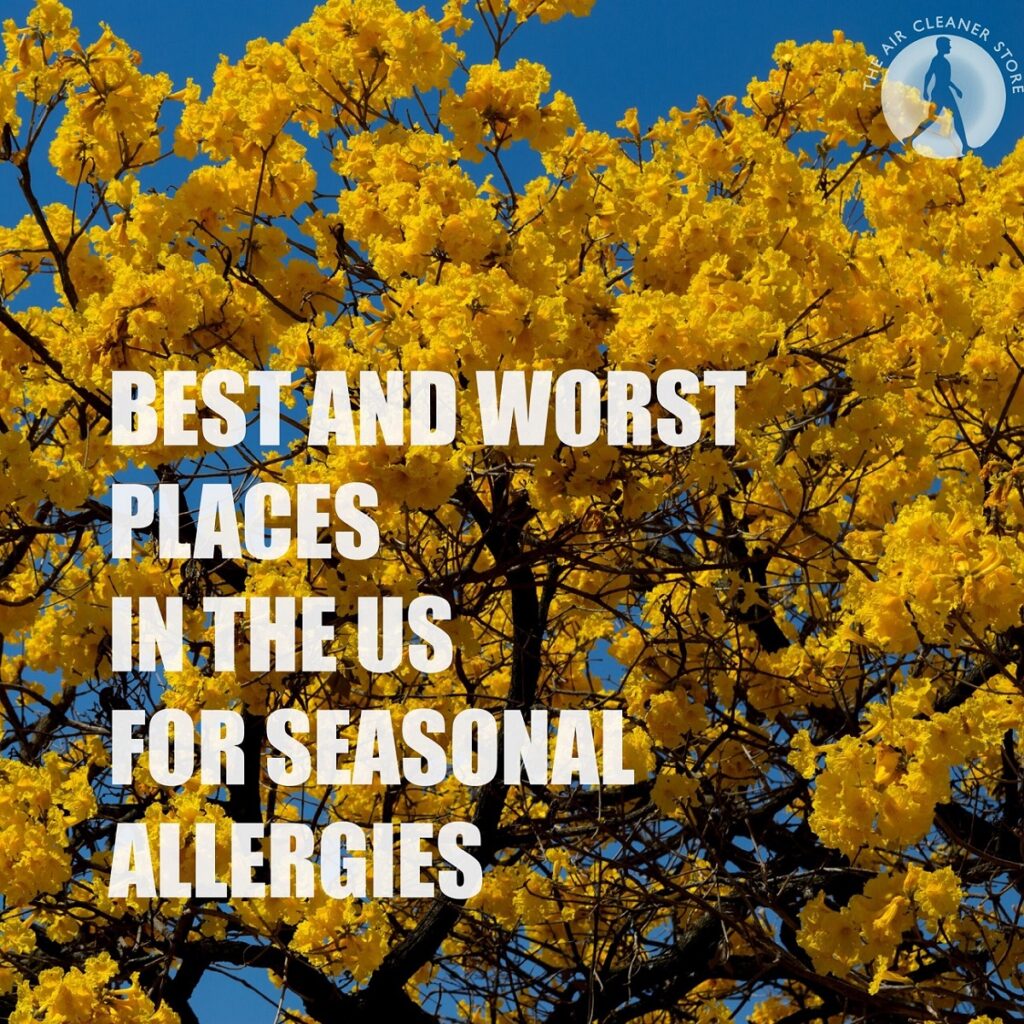Spring is the time of year when flowers bloom and people start enjoying the outdoors again. However, for seasonal allergy sufferers, any appreciation of the pretty flowers, greenery and increased sunshine is often accompanied by a variety of allergy symptoms.
Depending on where you live, you may need to take extra steps to prepare for the elevated pollen counts.
Pollen allergies in the United States
In the US, seasonal allergies can begin as early as February and last throughout the whole summer.
Most of the spring allergies are triggered by tree pollen and grass pollen. Both of these are present from early spring until the end of August, when they slowly start to fade. Near the end of summer, a different type of pollen steps on the scene. Ragweed is known to reach its peak of pollination in September and can last in some places to late November.
According to the Allergy Capitals Report February 2021, published by AAFA here is a list of the best and worst places in the US to live with allergy seasons.
The most challenging places to live with seasonal allergies in 2021 are:
- Scranton, Pennsylvania
- Richmond, Virginia
- Wichita, Kansas
- McAllen, Texas
- Pittsburgh, Pennsylvania
- Hartford, Connecticut
- Springfield, Massachusetts
- New Haven, Connecticut
- Oklahoma City, Oklahoma
- Bridgeport, Connecticut
The least challenging places to live with seasonal allergies are:
- Denver, Colorado
- Fresno, California
- Portland, Oregon
- Milwaukee, Wisconsin
- Stockton, California
- San Jose, California
- Salt Lake City, Utah
- Provo, Utah
- Seattle, Washington
- Durham, North Carolina
How Are These Cities Different and How Do They Impact Seasonal Allergies?
For the most part, the most abundant pollen allergy trigger in spring is tree pollen.
According to AAFA, the trees in the US that most frequently cause allergies are: ash, aspen, birch, cedar, cottonwood, elm, hickory, mulberry, oak, pecan, poplar and willow tree. Since different types of trees thrive in different environments, the climate in each region of the U.S. will have different kinds of trees and different concentrations of airborne tree pollen. Also, areas that have longer, warmer blooming seasons will create higher levels of pollen when compared to regions that have a colder climate and longer dormancy.
